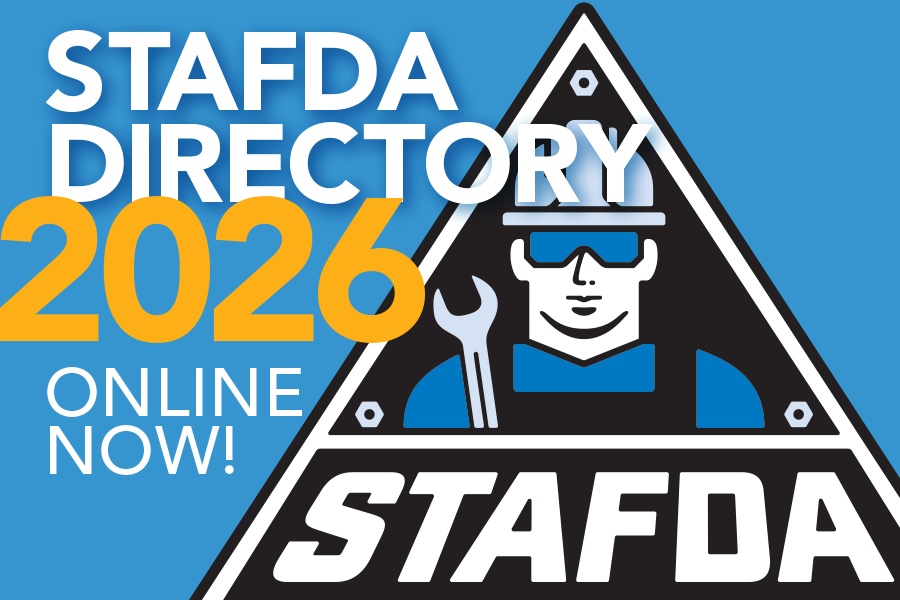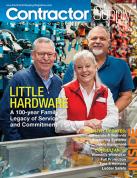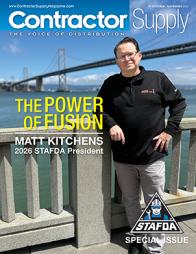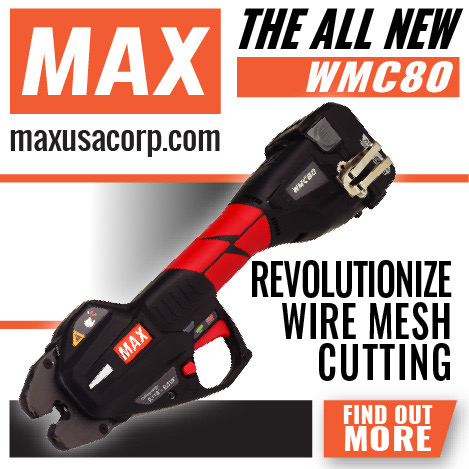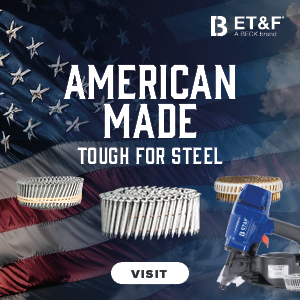 |
The portable air compressor market is projected to steadily grow for several years. Multiple market forecasts have indicated a compound annual growth rate of the global market between 5 and 6% from 2026-2033.
Similarly, the construction industry remains in a positive light, meaning that the demand for equipment that powers the tools being used should remain solid.
From infrastructure projects to the ongoing boom in data centers, busy contractors are looking for ways to work more efficiently while juggling evolving environmental goals, tight budgets, and tight deadlines.
“The outlook for the general construction trades and related industries remains strong in 2025,” said Carter Polacek, president of J-Air Compressors. “We’re seeing a consistent need for reliable, jobsiteready equipment.”
Construction professionals and various other industries rely on air compressors for numerous applications, including powering tools like nail guns and jackhammers. Having the ability to easily transport compressors to different jobsites can directly enhance productivity and efficiency.
Labor shortages, rising material costs, and tighter job timelines are pushing contractors to demand quality and portable tools such as air compressors.
Jerel Cole, senior global product manager for Hitachi Global Air Power, noted that a pause on spending from the Infrastructure Investment and Jobs Act could slow some projected momentum for contractors. In addition, he said global tariffs pose a risk to supply chain disruption and increased costs of imported machinery and parts.
With a continued increase in construction work, there is a greater demand for portable air compressors, which is a benefit to distributors and equipment rental houses.
“Value-minded contractors understand the importance of flexibility and scalability when it comes to the tools and equipment they use,” said Dan Fox, national sales manager for Rolair.
Because air compressors often endure tough conditions on jobsites, reliability is a critical consideration when manufacturing our product lines.
“We construct our units with heavy-duty components to help ensure they’ll stand up to long-term wear-and-tear,” said Dan Leiss, president of Jenny Products Inc. “While the upfront investment in a Jenny product may be a bit higher, our machines consistently pay off in the long run. We’ve stayed true to the core mechanics that have stood the test of time, while always finetuning our products to keep operation simple and efficient for users.”
Even with increased demand, manufacturers face a changing dynamic in the interaction between contractors and distributors as more contractors are researching and buying their tools and equipment online.
“Digital transformations, paired with end-user expectations of fast delivery and service, is changing how distributors and manufacturers interact,” Polacek said. “We’re making the transition to accommodate those who seek it, while also keeping our traditional purchasing options.”
At both ends of the supply chain, distributors and contractors are expecting faster support, better margins, and more seamless integration with their operations.
“Our continual improvement to provide our distributors with programs and resources to aid them in their sales has proven to be a win-win,” Polacek said.
SMART SOLUTIONS
A few clear trends are shaping the air power industry. There is an increased drive for energy efficiency and easy transportability. Additional areas of focus include IoT integration to enable predictive maintenance, real-time fleet monitoring, and smarter operations as well as safety and serviceability.
As consumers and industries become more conscious of their carbon footprint, manufacturers are increasingly focusing on developing compressors that are more energyefficient and eco-friendly. The trend is driven by both regulatory pressures and consumer demand for use of more sustainable products.
“Despite the geo-political fluctuations, the strong construction market, paired with tight deadlines and smaller budgets means electric portable air compressors are having a moment,” Cole said. “As the construction industry evolves, so are the tools that power it. For contractors and rental fleets, electric portable compressors offer a future-ready option that delivers on performance, efficiency, and sustainability.”
Cole notes that several key factors are driving a shift to electric motors in the portable air compressor market. These include:
- Tighter environmental standards, especially in urban areas and government-funded projects.
- Lower total cost of ownership due to reduced fuel, maintenance, and operating costs.
- Improved jobsite flexibility. Electric units are quieter and can run during off-hours or in noise-restricted zones.
- Uptime advantage due to no fuel refills, fewer moving parts, and longer continuous operation.
“Rental houses benefit from this shift by offering contractors a greener, more cost-effective option that’s increasingly preferred and sometimes required on the jobsite,” he said.
Another significant development is the rise of compact and lightweight compressors designed for specific applications.
“Items that can be used regardless of the size of the job, number of people on hand, or availability of power will always have a place in the back of the truck,” Fox said, noting that is why Rolair continues to see success with its extensive line of gas-powered air compressors.
He cites Model 6590HK18 as an example.
“When you do the math and consider that the air output is nearly 50% greater than our standard model 4090HK17 and the cost is only 15% higher, it is a no-brainer,” Fox said. “It has the same footprint and weighs only 5 pounds more.”
For contractors, the easier a compressor is to transport and the more it can do, the better. Tool manufacturers and compressor makers are working closely to ensure compatibility and optimized performance as units become more compact and efficient.
“We’re investing in all these areas, to provide our distributors and end users with solutions that help them stand out in a competitive market,” Polacek said.
Overall reliability remains a consistent item of importance.
Leiss noted that Jenny Products has improved pump longevity and overall compressor performance through modern machining processes.
“A pump’s cylinder wall can be machined to achieve exceptional bore tolerances,” he said, adding that in the Jenny Products compressors, specially designed rod inserts on the connecting rod-crankshaft interface help prevent damage to pump components. “We further maximize durability by using rugged, oversized crankshaft bearings.”
In addition, Jenny Products compressors include maintenance features like oil gauges, belt guards, and unloading valves.
WHAT’S NEW?
Across the board, manufacturers of air compressors are making improvements to keep pace with customers’ needs.
Jenny Products offers several single-stage and two-stage electric-powered wheeled portable compressors, in addition to a full line of gas-powered portable air compressors.
Despite having numerous gaspowered models on the market for years, Fox said Rolair developed a new intake filter and a vibration dampener between the fuel tank and belt guard, which are now featured on all belt-driven models, leading to noise reduction and improved performance.
In addition, Rolair offers accessories to complement its air compressors such as a 10-gallon auxiliary tank called the AIRKEG.
“By adding it to your compressed air system, you can maximize your air compressor’s efficiency and work further from it without having to worry about pressure loss,” Fox said.
Polacek said J-Air’s TurboAir pancake electric units have been a big hit with early adopters.
“It’s compact, lightweight, and incredibly versatile,” he said. “It’s perfect for small crews needing quick, portable power. It’s a great example of where the market is heading, small but mighty tools with maximum convenience.”
Similarly, in response to growing customer demand for electric portable solutions, Hitachi Global Air Power has recently expanded its electric portable lineup with two Sullair models as part of the company’s latest lineup.
Cole said the E1035H launched in 2023, delivers dependable power with a significantly lower environmental footprint ideal for mid- to large-scale applications.
In addition, the E425H was unveiled this year, offering a compact footprint for smaller or noise-sensitive jobsites.
Both units feature patent-pending swing-out coolers for easy access and cleaning and a patent-pending condensate management system which eliminates the need for additional equipment and the associated disposal costs. Lastly, Cole said each includes the company’s Integrated AirLinx remote monitoring, enabling predictive service alerts and streamlined fleet management.
LEARN MORE
This article originally appeared in the June/July 2025 issue of Contractor Supply magazine. Copyright, 2025 Direct Business Media.





